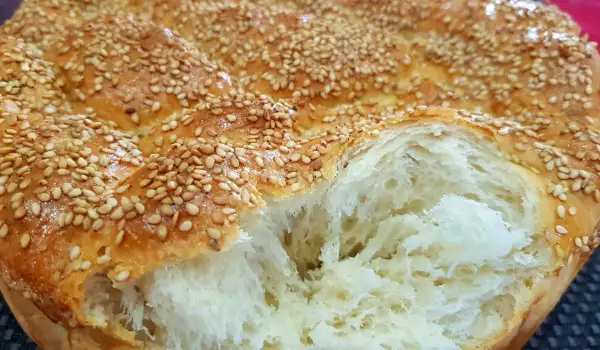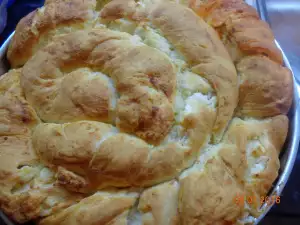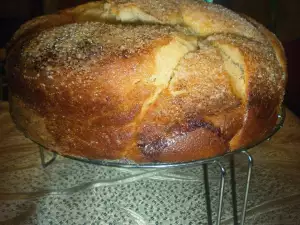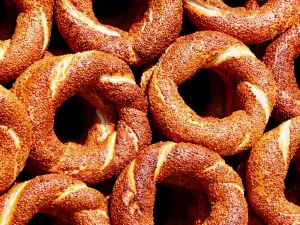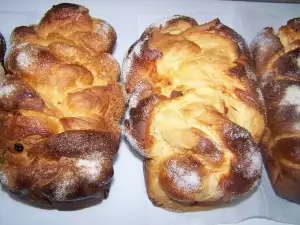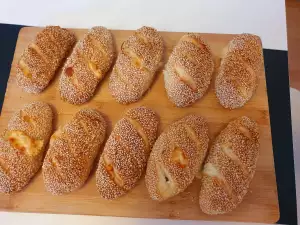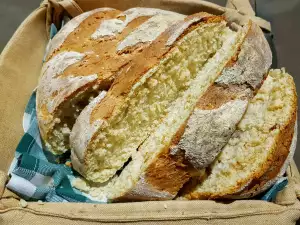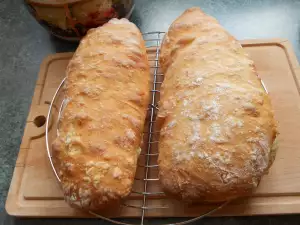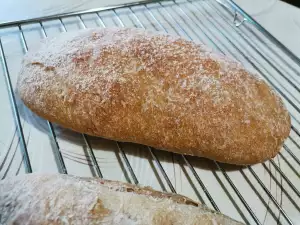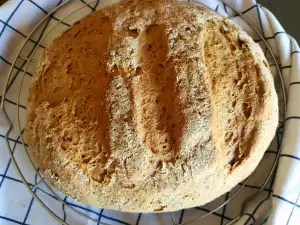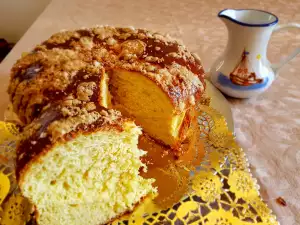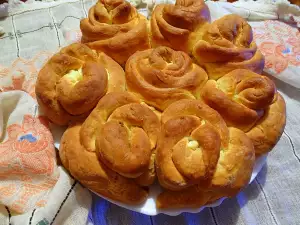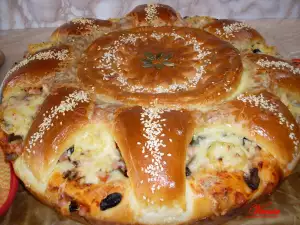How to make
Activate the yeast in the water along with the sugar and two spoons of flour.
Sift the flour into a bowl and make a well in which you need to then pour the salt, egg white, oil, yogurt (at room temperature) and finally the activated yeast.
If you want your simit pogaca to be predominantly sweet, add a little more sugar.
I make it with a neutral taste - neither savory, nor sweet.
Knead a smooth, well-hydrated dough, by adding flour, until it stops sticking, but be careful not to make the dough too hard.
Leave it in the bowl to rise until it doubles in volume, wrapped in a clean cloth or cling film.
Knead the dough again, by adding the butter and pulling and stretching it out to form threads. Shaping will also help for this purpose.
When kneading it once again, I sprinkle flour or oil on the worktop again, so that it does not stick, since I like to leave the dough softer, so that the pogaca becomes fluffier.
To shape the Turkish bread, divide the dough into 6 parts. Take the first one and divide it in two again and stretch each one into a long stick. Twist the two sticks and wrap them in a spiral form. Do the same with the others and grease your palms with melted butter, which will not only prevent sticking, but will also help to separate the threads.
Arrange in a greased or lined with baking paper tray with a diameter of 9.1″ (23 cm) and leave it to rise again for about 1 hour or until it rises well enough. Depends on the heat in the room.
Spread the simit pogaca with the beaten egg yolk, diluted with a little fat and water (a few drops)
Sprinkle generously with sesame seeds.
Bake the stringy bread for 25-30 minutes or until it aquires an appetizing color at 360°F (180 degrees) in a preheated oven.
Enjoy your meal!
